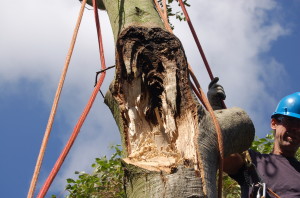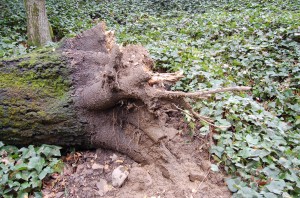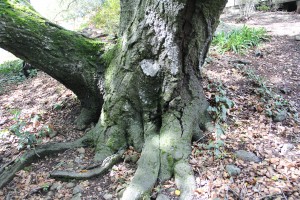A crash and a boom, the gutter smashed up, and a coast live oak (Quercus agrifolia) tree next to your house rips apart. Thankfully nobody hurt, but what if someone had been out in the yard when it split?
Knowing how Q. agrifolia fails is a good starting point. Decay is the most common type of failure for this oak and failures occur along the branch almost as often as at the point of attachment (like the one shown above). Root failures associated with decay have saturated soil and wind as key factors that contribute to their failures, (Costello and Jones, 2014).
If you live, love and work with Q. agrifolia and want to reduce risk, I recommend:
1) evaluate soil moisture around tree – should be dry in summer, should not be pooled around trunk during rainy season
2) note wind patterns and tree location – edge & exposed trees that are windward are more likely to be impacted by wind
3) examine branches for cracks (especially on top), and branch attachments (especially for bark that grows inwards) – cracked or cracking branches may be poised to fail, and require further evaluation & possibly action
4) pay special attention to the region where the trunk and soil meet, if no flare or buttress is available, dig down, expose, examine – decay in this reason is often fatal, make sure the trunk stays dry
For more information see CA Tree Failure Report Program



